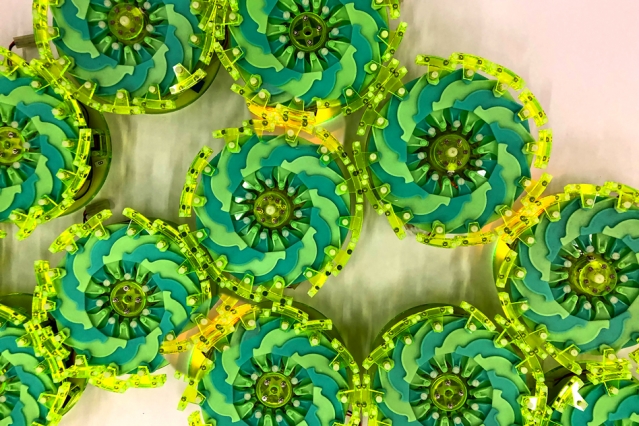
(Shuguang et al., Nature, 2019)
A group of simple disc-shaped robots, called ‘The Particle Robot’ that can push and pull one another while moving around, carrying objects and completing other tasks, has been designed in a combined effort from MIT, Columbia Engineering, Cornell University, and Harvard University engineers.
As published on the ‘Nature’ Journal, these simple robotic ‘Particles’ which are loosely connected to one another were designed on the basis of biological Cells. More effective in a cluster than being single, these little ‘cells’ have two main functions, being able to squeeze through little gaps and expand when necessary.
Based on statistical mechanics, the Particle Robot is a step up from conventional robots, where a failure of a single part results in the whole unit being broken. Those traditionally designed robots consist of complex structures often designed to do a single task. These downfalls make ‘The Particle Robot’, more flexible, durable and scalable. Because these Particles have no centralised control, no single point of failure and no fixed shape. Things without a unique identity!
A carefully timed motion let the Particles push and pull one another towards a certain direction. The built-in sensors can even direct the cluster towards a light source. And while on the move, the cluster of Particles can squeeze through hurdles, or even carry objects in their midst.
Being round in shape, they can combine to form many different shapes, which enable them to navigate easily through different paths. These Particles are self-sufficient and do not rely on the full structure or other Particles to operate individually. This makes it easier to manipulate the whole unit by adding or removing any Particle.
They connect to each other by magnets around the perimeter. In size, a Particle is about six inches when contracted and about nine inches when expanded. It consists of a battery, a microcontroller, a sensor to detect light intensity, a small motor and also a component to send and receive signal messages. The contracting and expanding parts are made of panels connected in a circular form. Each of these panels has two small magnets.
According to Shuguang Li, a postdoctoral fellow at MIT and the First author of the paper, “When in motion, Particles experiencing the highest light intensity expand first. As those Particles contract, the next Particles in order, expand. That timed expanding and contracting motion creates a mechanical expansion-contraction wave, a coordinated pushing and dragging motion, that moves a big cluster toward or away from environmental stimuli”.
Their next step will be to scale down the Particle size, and create a Particle robot consist of millions of small Particles. This may make their ultimate goal of creating a robust yet adaptable robot, a one step closer.
